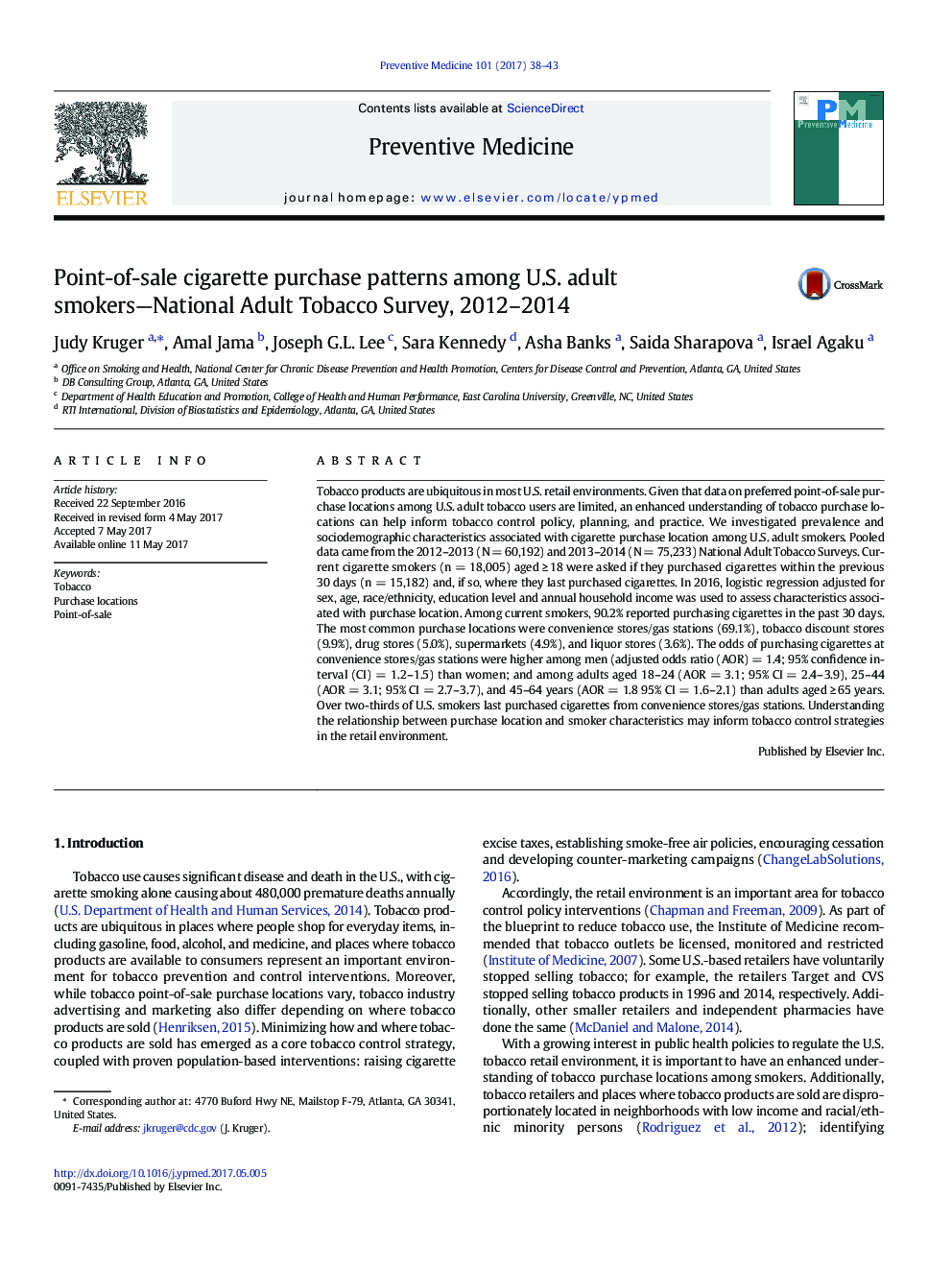| Article ID | Journal | Published Year | Pages | File Type |
|---|---|---|---|---|
| 5635516 | Preventive Medicine | 2017 | 6 Pages |
Abstract
Tobacco products are ubiquitous in most U.S. retail environments. Given that data on preferred point-of-sale purchase locations among U.S. adult tobacco users are limited, an enhanced understanding of tobacco purchase locations can help inform tobacco control policy, planning, and practice. We investigated prevalence and sociodemographic characteristics associated with cigarette purchase location among U.S. adult smokers. Pooled data came from the 2012-2013 (N = 60,192) and 2013-2014 (N = 75,233) National Adult Tobacco Surveys. Current cigarette smokers (n = 18,005) aged â¥Â 18 were asked if they purchased cigarettes within the previous 30 days (n = 15,182) and, if so, where they last purchased cigarettes. In 2016, logistic regression adjusted for sex, age, race/ethnicity, education level and annual household income was used to assess characteristics associated with purchase location. Among current smokers, 90.2% reported purchasing cigarettes in the past 30 days. The most common purchase locations were convenience stores/gas stations (69.1%), tobacco discount stores (9.9%), drug stores (5.0%), supermarkets (4.9%), and liquor stores (3.6%). The odds of purchasing cigarettes at convenience stores/gas stations were higher among men (adjusted odds ratio (AOR) = 1.4; 95% confidence interval (CI) = 1.2-1.5) than women; and among adults aged 18-24 (AOR = 3.1; 95% CI = 2.4-3.9), 25-44 (AOR = 3.1; 95% CI = 2.7-3.7), and 45-64 years (AOR = 1.8 95% CI = 1.6-2.1) than adults aged â¥Â 65 years. Over two-thirds of U.S. smokers last purchased cigarettes from convenience stores/gas stations. Understanding the relationship between purchase location and smoker characteristics may inform tobacco control strategies in the retail environment.
Keywords
Related Topics
Health Sciences
Medicine and Dentistry
Complementary and Alternative Medicine
Authors
Judy Kruger, Amal Jama, Joseph G.L. Lee, Sara Kennedy, Asha Banks, Saida Sharapova, Israel Agaku,
